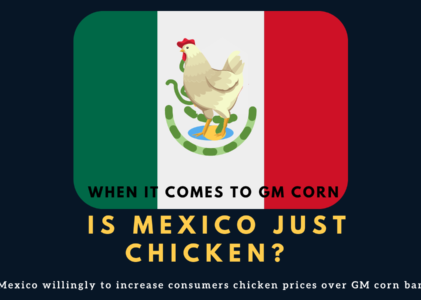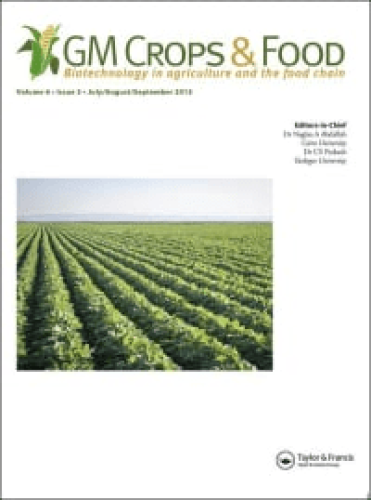Still in Limbo
In December 2020, Mexico’s President Andrés Manuel López Obrador publicly declared that Mexico would ban all imports of genetically modified (GM) corn (or maize as it’s referred to in Mexico), stating that GM crops are poisonous to humans. Bundled into this decree is a ban on the use of glyphosate. These measures are to fully come into effect in 2024. Despite assuring US Agricultural authorities twice (first in March 2021, and then again in October 2021) that Mexico’s GM corn ban only applied to corn meant for direct human consumption, there is now a renewed push for Mexico to ban GM corn at any point in the supply chain. A year after publishing a vaguely worded Presidential Decree, Mexican authorities have not clarified whether they will stop the import of GM corn and rely solely on domestic corn production to supply internal demand. A tall order, given that in 2020 Mexico imported 17.7 million metric tons of yellow corn from the US, up from 16.5 million metric tons the previous year, accounting for over 86% of Mexico’s domestic corn needs. Potential economy-wide implications have been discussed in a previous blog; and this week, I will discuss our new article on the economic loss that Mexico will incur by banning GM corn imports, which have now been estimated. The article is available here.
Yellow corn is the main component of chicken feed in Mexico, whereas white corn is used to produce human food products. Practically all of the yellow corn needed for chicken feed is imported from the US. For reasons beyond economics (and seemingly, common sense), Mexico has decided to close the door to US yellow corn because it is GM. How will Mexico supply the 86% yellow corn deficit it has created? The solution proposed by the Mexican government is to convert all domestic corn production to agroecology techniques. Agroecology is a term that refers to any number of agricultural production systems that do not use artificial inputs, particularly fertilizer and chemicals for weed control. Agroecology, corn yields are, on average, 31% less than conventional corn production practices. The government decree states that all the farmers in the entire country can only produce yellow corn using agroecology with its 31% reduced yield, when Mexico currently imports 86% of its yellow corn needs, is going to devastate livestock feed markets and meat production facilities.
Mexican Poultry Consumption
Total chicken consumption can be seen in Figure 1. Of the total animal protein consumed in Mexico, chicken meat represents 38.8%, making it the leading source of protein. In 2016, per capita, chicken meat consumption was 26.5 Kg, and its price represented 8.5% of total household food expenditure (full report here). The OECD also reported that consumption of chicken has tripled since 1990, and by 2025 it is projected to increase by another 10%.
Figure 1. Mexican chicken meat consumption 2013-2020

What happens if yellow corn prices rise?
Prices for chicken feed vary significantly by region in Mexico. Production costs depend on the feed formula being used, which in turn depends on the developmental stage of the bird. According to the OECD, the main three ingredients of chicken feed in Mexico are yellow corn, sorghum, and soy paste.
Table 1. Chicken feed costs
| Feed Component | Percentage of Total Feed | Price per ton in US$ (January 2022) |
|---|---|---|
| Yellow corn | 61 | $360 |
| Sorghum | 26 | $323 |
| Soy paste | 13 | $506 |
| Average Feed | – | $1,190 |
Notes: Based on data from OECD and SNIIM .
Our study calculates the domestic price of yellow corn will increase by 81% because Mexico stops importing yellow corn from the US. The domestic price of agroecology yellow corn will increase by 81% and rise to US$652 (Table 1). An import ban makes the average price of chicken feed per ton increase from US$1,190 to US$1,482. Feed is just one component in the overall costs incurred when producing chicken meat.
Table 2. Mexican chicken meat cost structure
| Component | Percent |
|---|---|
| Feed | 66 |
| Chick | 14 |
| Labor | 5 |
| Electricity and water | 3 |
| Medicine | 2 |
| Marketing costs | 6 |
| Administration costs | 4 |
Feed represents two-thirds of total production costs. Assuming that chicks are raised for five weeks and that each week they consume 454 g of feed (2.27 kg total feed), it currently costs US$3.36 worth of feed to get a chicken to a marketable weight. If the import ban is enacted, the price to feed a chicken for five weeks is likely to increase to US$4.10. Some of this price will be absorbed by producers, while the rest will be passed on to consumers. Assuming producers pass on 50% of the increase (and this is a huge assumption), consumers will now have to pay an extra US$0.37 per whole chicken (about 6 lbs). How will consumers cope with this price increase?
It’s important to place this price increase within the Mexican wage context. In Mexico, the minimum daily wage in a city is 213 pesos or US$10.46 (February 2022 exchange rate), and in rural areas it’s 148 pesos or $7.28. This is a significant increase that will hurt consumers; this small increase of $0.37 passed onto an individual or household represents between 3.5%-5% of their daily wages.
Conclusion
Banning GM corn imports is not a net positive move for Mexico or its people. The country known for domesticating corn has now decided to abdicate its role as a corn innovator. This decision will be costly. How will consumers react to this price increase? Especially when things are not great to begin with, as Mexico assesses the economic hit it took because of the pandemic. Mexico is presently ranked 46th in terms of global food security and the Presidential Decree will worsen food security in Mexico.




There are many forms of innovating around Corn, forms that can protect it while we innovate. While I agree that banning GMO corn so quickly is not practical and needs a better plan I coincide with the need to protect corn for everyone.
I would also like to ask you to be careful and sensitive with the way you portray Mexico´s flag, a flag is the symbol of identity of a nation, it speaks of its history and values. I believe you meant no disrespect, but ask you to reflect upon it.